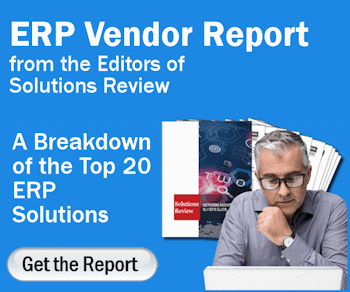Looking at Cloud ERP Within SMBs


ERP software once belonged predominantly to large businesses and a handful of smaller firms that were willing to invest the time and money in these hulking systems. Times have changed quite a bit thanks to the cloud, however; with the rise of cloud-based solutions, businesses of all sizes can now roll out an ERP solution and take advantage of advanced resource management that previously was reserved for much larger firms.
To get a sense of the change, and how Small and Mid-sized Businesses (SMBs) are engaging with ERP systems today, we sat down with Ralph Hess, the vice president of global sales for Navigator Business Solutions, and a 30-year ERP industry veteran.
Widget not in any sidebars
ERP has been slow to the cloud. Where are we in that journey right now?
Cloud adoption is a multi-stage process where there are the early adopters, there’s the moment it goes mainstream, and then there are the late adopters. I think we’re now in the mainstream phase of cloud ERP adoption. Early on, in 2013-16, businesses were willing to accept imperfect solutions. Maybe it didn’t do exactly what they wanted, but it was the cloud, it was quick, it was easy to deploy, and it was cost-effective. So it was good enough. Now businesses are looking for deeper functionality. Since 2016, they are compromising less. They want deeper functionality in the solutions and it is on the cloud. Because there now is a much more competitive marketplace.
What specifically are SMBs looking for today in a cloud ERP?
One of the major pain points that cloud solutions solve today is support for omnichannel site operations. Businesses are all struggling in some way with how to service multiple channels. How do I have inventory availability for Amazon, eBay, Target, for Walmart at the same time? Those are the types of things that they have to do in today’s marketplace because it’s so competitive, and e-commerce has really changed the rules.
Cloud-based ERP, such as SAP Business ByDesign, does a much better job at multi-channel due to its inherent connectivity. What that really does is deliver on the promise of the cloud: easy integration with best of breed back to your digital core.
Where do SMBs typically struggle with cloud ERP today?
I think once they’re up and running, people tend to be very happy with the cloud-based system because the solution improves their ability to operate more efficiently, be more collaborative with their customers, and be more responsive.
The struggle is during the implementation, and the struggle is real. It has to do with the fact that everybody in the world has at least an eight-hour-a-day job. Even if we’re an implementation partner, it’s not our project: It’s the customer’s project. They need to take ownership of it. They need to go into a project being better organized, understanding all their business processes, and having a clear statement of goal and objective for the project.
I also understand that change management is a huge issue for SMBs rolling out a new ERP system.
There’s a trend toward standardized business processes. Change management is needed because businesses are moving from solutions that were tailored to their needs to processes that are best for their business. Rita in accounts payable was complaining that it was taking so long to enter invoices, so Johnny in IT went in and took 15 fields off her screen and changed her sequence of keystrokes so it works great for her. Do you know what happens when we tell Rita she must now use the solution out of the box? Oh my goodness. By the way, Rita is 63 years old and she isn’t changing because she’s only got two years left before she retires.
Then there are the other blockers to change: We’ve done things this way and that’s what makes us special in the market and why we’ve been successful. Now you’re telling me I can’t do it that way anymore? Those are the real ones where you need professional change management because the custom business processes in their ERP solution usually aren’t why the firm is successful.
Is the need for customization more perception than reality?
Yes, it is a disconnect between leadership in the company and the ERP evaluation process. Unbeknownst to the CEO, the IT guy who is leading the evaluation has already taken into account the fact that this is the way the company does business, but the CEO is hearing from Rita in accounts payable who is saying that the new system without customization will screw everything up.
We see this desire for customization with about 25 percent of the implementations we support. But only about 10 percent of those instances require actual customization to the system because there is a special circumstance that demands it.
Looking for more? Download our ERP buyers guide for free and compare the top-24 products available on the market with full page vendor profiles. The guide includes four key capabilities to look for in an ERP solution, plus five questions to ask yourself and five questions to ask the software provider before purchasing. It’s the perfect resource for anyone looking to find right ERP for their business/organization.
And don’t forget to follow us on Twitter, Facebook and LinkedIn for all the latest in the ERP space!























